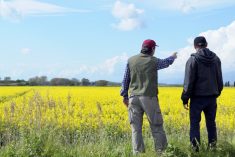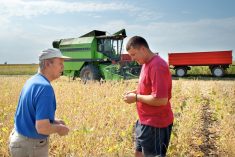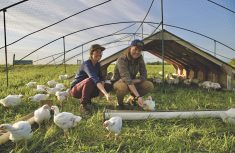My grandfather was a part-time medical doctor and a full-time food nut. He’s been gone for 40 years now but I still think of him pretty much every time I open the fridge. He hopped from one loony idea to another over the course of his career, lecturing his patients and every member of his family on water cures, spiritualism, socialism, vegetarianism and his own peculiar caveman’s guide to eating. This was a ruthless diet of only those wild, uncultivated things you could pick up in the woods, shoot with a bow and arrow or catch on a hook.
Read Also

Employment Agreements Can Help Protect Your Farm
Entering into employment agreements with each of your farm employees should be at the top of every farm’s “to do” list, but caution must be exercised.
Grandfather sure stood out in downtown Toronto in the 1930s. He was very tall and rail thin, with a bushy beard. In his shorts, without a shirt he looked like pirates had dropped him off on a tropical island about five years ago. He argued with everybody about everything, starting with his eminent professors at Harvard Medical School. “Fathead” is a term he introduced to the family a century ago and we all still use it freely to describe anyone who can’t see things the way we do.
Grandfather’s basic theory was that the human species had evolved pretty well until it took a wrong turn about 10,000 years ago at the beginning of the Neolithic period. That’s when we started farming and everything since that moment has been downhill. Paleolithic man was about six feet tall, lean and fit, walked everywhere, felt great, and usually died accidentally, probably while trying to club something bigger than himself. He ate a hundred different things that he came across on those walks, all of them just as healthy as himself.
Then some dangerous Neolithic genius in the Tigris-Euphrates river valley found that you could plant seeds in the ground and sit around and watch them grow into a large quantity of one kind of food that would last for months. This made life easier in some respects, because he could spend more time at rodeos and casinos, but it was a disaster for his physical health. Over the next 10,000 years he lost nearly two feet off his height, suffered chronic tooth decay and developed debilitating viral diseases from keeping too many animals in the house, and inflammatory ailments from eating too much grain and dairy. His life expectancy dropped to about 30, he became ill-tempered because of his sore teeth, and very suspicious of the neighbours.
Paleolithic man probably knew how to handle himself in a barroom brawl, but there is no evidence that humans organized into armies and practised warfare until they learned how to farm. Crops and animals had to be defended in a spiralling arms race that pushed humans into larger and larger settlements that could defend existing cropland and conquer new territory. Human history ever since the Neolithic age has been one of rising population, steady increases in food production and technology, and a parallel escalation in human conflict.
Anyway, Grandfather would carry on like this until his guests were glaze-eyed and submissive and then he would set bowls of wild mushroom soup and boiled fish in front of them. After dinner he led them on a brisk walk through the woods on his property where he gathered mushrooms and shot starlings for the pot.
A few years after Grandfather died (he was 83, to his credit), a Seattle gastro-enterologist published a book called The Stone Age Diet that promoted exactly the same ideas. The Paleo Diet, as it became known, was the father to many modern-day diets that try to reconstruct an idyllic past when we ate smarter and felt better. Conventional science, of course, dismisses all of this as rubbish. (This is what reputable science does best.) Study after study rejects the notion that returning to a hunter-gatherer diet will extend a person’s life. However, if you do follow the Xtreme Low-Carb Caveman Diet, there is pretty solid evidence that life will feel longer.
Scientific mud wrestling aside, there does seem to be unanimous agreement that our physiology did suffer a noticeable setback in the Neolithic Age from which we have never quite recovered. Every time I see a National Geographic photo of a tall, lean, Masai cattleman trotting along in the dust behind his herd, I think of Grandfather and wonder if the old quack might have been on to something.














